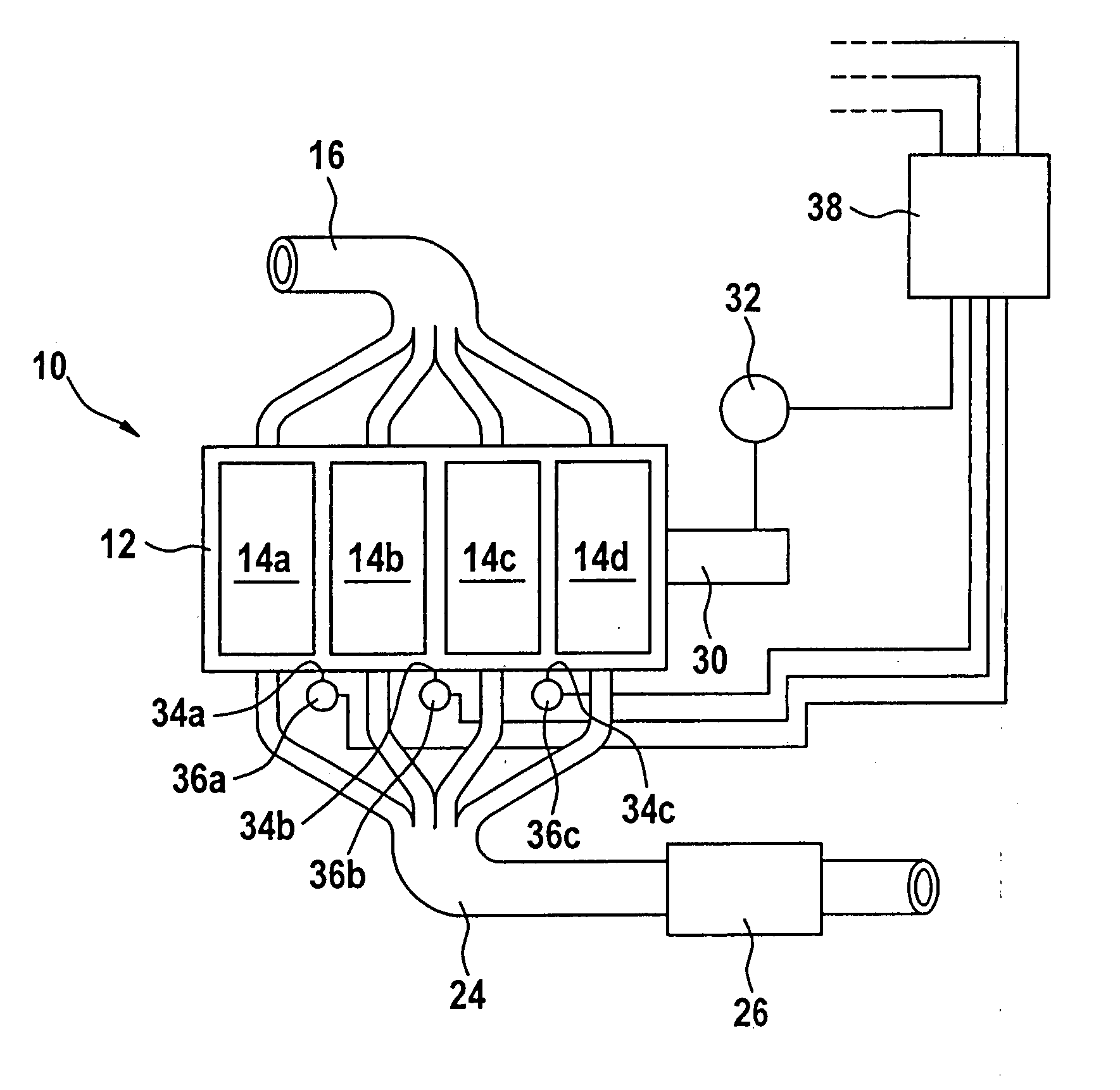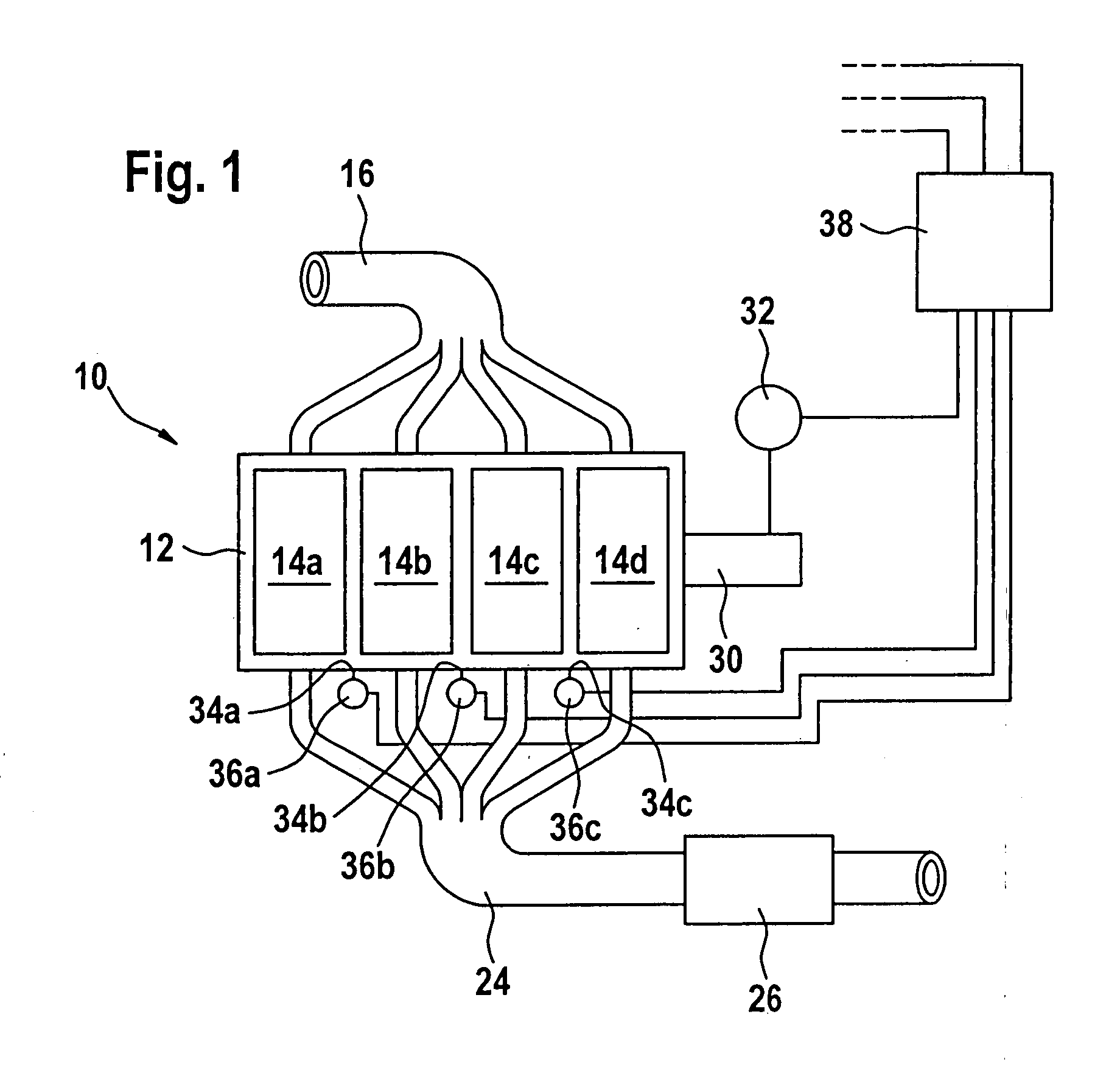Method for ascertaining the noise emission of an internal combustion engine
a technology of internal combustion engine and noise emission, which is applied in the direction of machines/engines, analogue processes for specific applications, instruments, etc., can solve the problems of critical noise emissions, inability to fully avoid, and inability to detect the noise emission of homogeneous combustion, etc., and achieve the effect of short computation times
- Summary
- Abstract
- Description
- Claims
- Application Information
AI Technical Summary
Benefits of technology
Problems solved by technology
Method used
Image
Examples
Embodiment Construction
[0033]An internal combustion engine is labeled overall with reference numeral 10 in FIG. 1. It is used for driving a motor vehicle.
[0034]Internal combustion engine 10 includes an engine block 12 having four cylinders 14a to 14d, which receive intake air via an intake manifold 16. Combustion exhaust gases are removed from cylinders 14a through 14d with the aid of an exhaust gas manifold 24, in which a catalytic converter 26 is situated. A crankshaft 30, whose angular position and rotational speed are detected by a speed sensor 32, is set into rotation when engine 10 is operated.
[0035]A first structure-borne noise sensor 36a is situated on engine block 12 between cylinders 14a and 14b at an installation point 34a. A second structure-borne noise sensor 36b is situated between cylinders 14b and 14c at an installation point 34b, and a third structure-borne noise sensor 36c is situated between cylinders 14b and 14c at an installation point 34c.
[0036]All sensors 32 and 36a to 36c deliver ...
PUM
 Login to View More
Login to View More Abstract
Description
Claims
Application Information
 Login to View More
Login to View More - R&D
- Intellectual Property
- Life Sciences
- Materials
- Tech Scout
- Unparalleled Data Quality
- Higher Quality Content
- 60% Fewer Hallucinations
Browse by: Latest US Patents, China's latest patents, Technical Efficacy Thesaurus, Application Domain, Technology Topic, Popular Technical Reports.
© 2025 PatSnap. All rights reserved.Legal|Privacy policy|Modern Slavery Act Transparency Statement|Sitemap|About US| Contact US: help@patsnap.com



